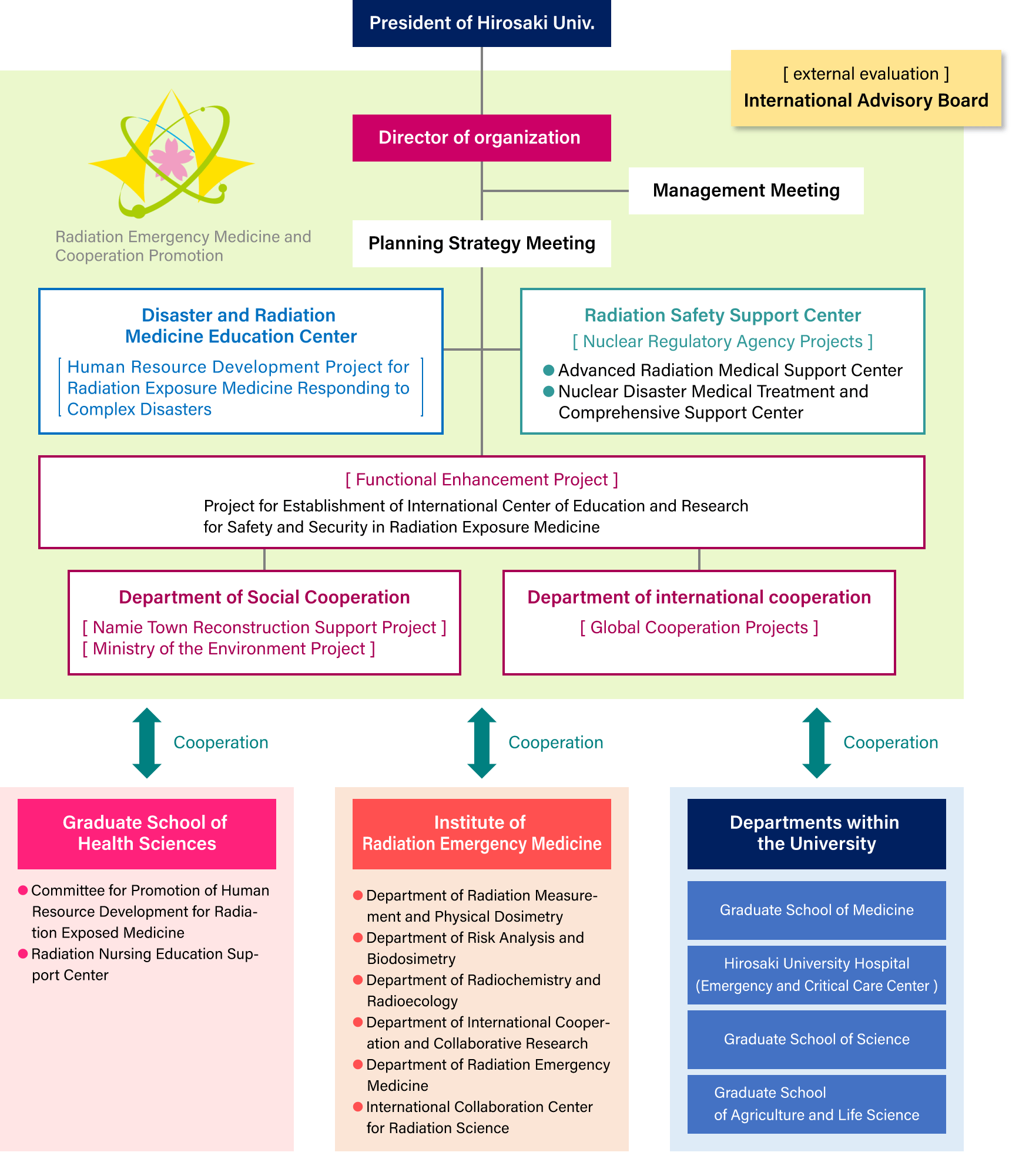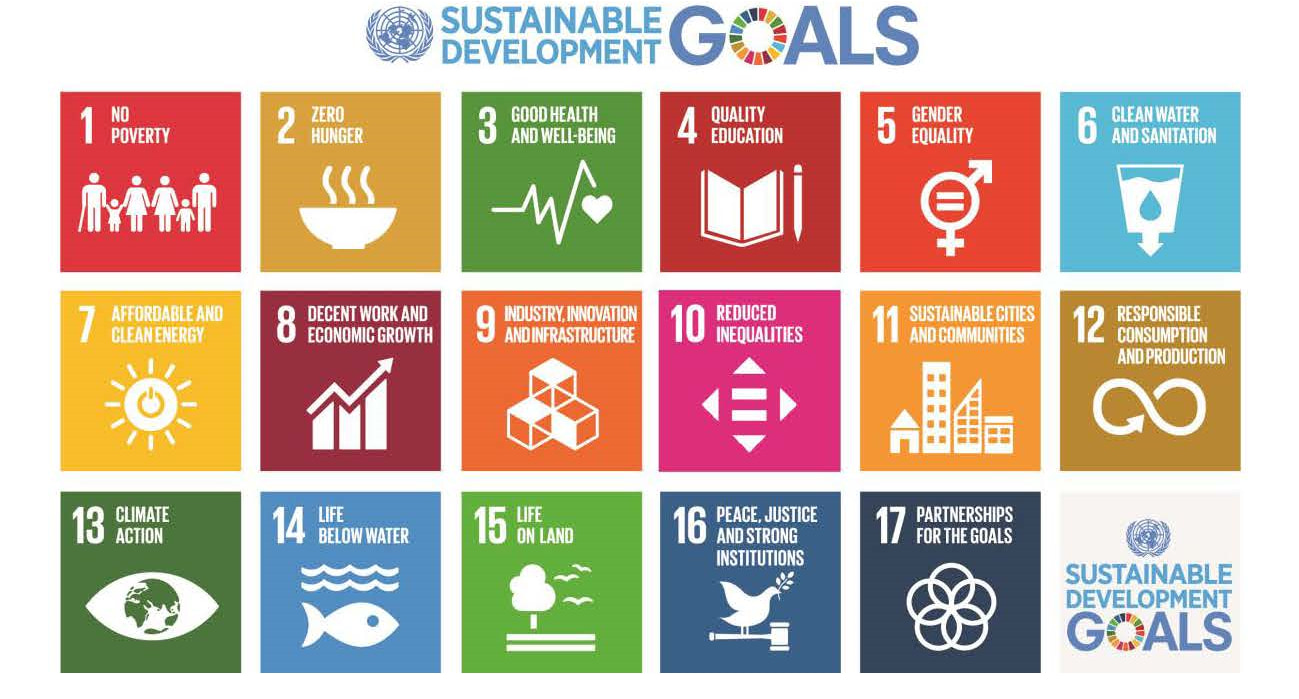Message
Hirosaki University has been engaged in the development of a radiation exposure medical care system, education, research, and human resource development related to radiation exposure medicine since 2008, before the Great East Japan Earthquake, considering its regional background of nuclear facilities. In response to the nuclear power plant accident after the earthquake, support activities at evacuation centers and various academic surveys have led to many contributions, and these efforts in radiation exposure medicine have become one of Hirosaki University’s most ambitious and distinctive initiatives. Based on the human, organizational, and academic resources cultivated thus far, in August 2015, Hirosaki University was designated by the Nuclear Regulation Commission as the “Advanced Radiation Exposure Medical Support Center” and the “Comprehensive Support Center for Nuclear Disaster Medicine” as facilities to deal with nuclear disasters. In conjunction with this designation, the “Comprehensive Support Center for Radiation Safety” was established under the Hirosaki University Radiation Safety Organization to organize the activities of both centers within the university. In addition, during the third mid-term plan and target period of Hirosaki University (FY 2008-2021), we have focused on the “promotion of international education and research to ensure safety and security in radiation science and radiation exposure medicine” as one of the projects to promote the strengthening of the university’s infrastructure. Furthermore, in September 2009, after the Great East Japan Earthquake, Hirosaki University concluded a partnership agreement with the town of Namie in Fukushima Prefecture and has continued to work on the “Namie-cho Reconstruction Support Project” and the “Risk Communication Project for the Residents of Namie-cho (Ministry of the Environment)” organized by the university’s cross-departmental organization. The Organization for the Promotion of Collaboration in Radiation Exposure Medicine was established on October 1, 2019, to promote collaboration systematically and strategically across disciplines and organizations in the various projects related to radiation exposure medicine at Hirosaki University.
From 2022, we plan to establish the “Education Center for Disaster and Radiation Medicine” within Radiation Emergency Medicine and Cooperation Promotion and assign full-time faculty members to develop more diverse human resources who will be active in the field of radiation exposure medicine, which is becoming increasingly complex.
We will continue to contribute to the further development of education and research at Hirosaki University, as well as playing a role in the national nuclear disaster medical care system, by conducting various activities related to radiation exposure medicine in cooperation with domestic and overseas institutions.
Director of the Radiation Emergency Medicine and Cooperation Promotion
Overview
Radiation Emergency Medicine and Cooperation Promotion was established in October 2019 to promote cooperation systematically and strategically across disciplines and organizations in various projects related to radiation exposure medicine at Hirosaki University.
The organization consists of two center and two divisions: the Center for Radiation Safety and Comprehensive Support, the Center for Education on Disaster and Radiation Medicine, the Division of Social Cooperation (in charge of projects in Namie Town and the Ministry of the Environment), and the Division of International Cooperation (in charge of global cooperative projects). In addition, various activities are conducted in cooperation with the Research Institute of Radiation Emergency Medicine, the Graduate School of Medicine, the Graduate School of Health Sciences, the Hospital attached to the School of Medicine, the Graduate School of Science and Technology, and the Faculty of Agricultural and Life Sciences.
The Radiation Safety Support Center is mainly engaged in the activities of the “Advanced Radiation Protection Support Center” and the “Comprehensive Support Center for Nuclear Disaster Medicine” designated by the Nuclear Regulation Authority. The main activities of the Center for Education of Disaster and Radiation Medicine are the “Project for Human Resource Development of Radiation Medicine for Responding to Complex Disasters”.
The main activities of the two divisions are to support the reconstruction of Namie-cho, Fukushima Prefecture and other areas and to contribute to solving issues in local communities by strengthening cooperation with local governments, companies, etc. as part of the 4th Mid-term Target and Mid-term Plan starting in 2022, and to develop diverse human resources who can play active roles in the world by utilizing the radiation-related education and research centers. The center also publishes an English-language journal, Radiation Environment and Medicine (Hirosaki University Press), to disseminate information on related academic activities.
The Radiation Medicine System at Hirosaki University

Efforts to SDGs


